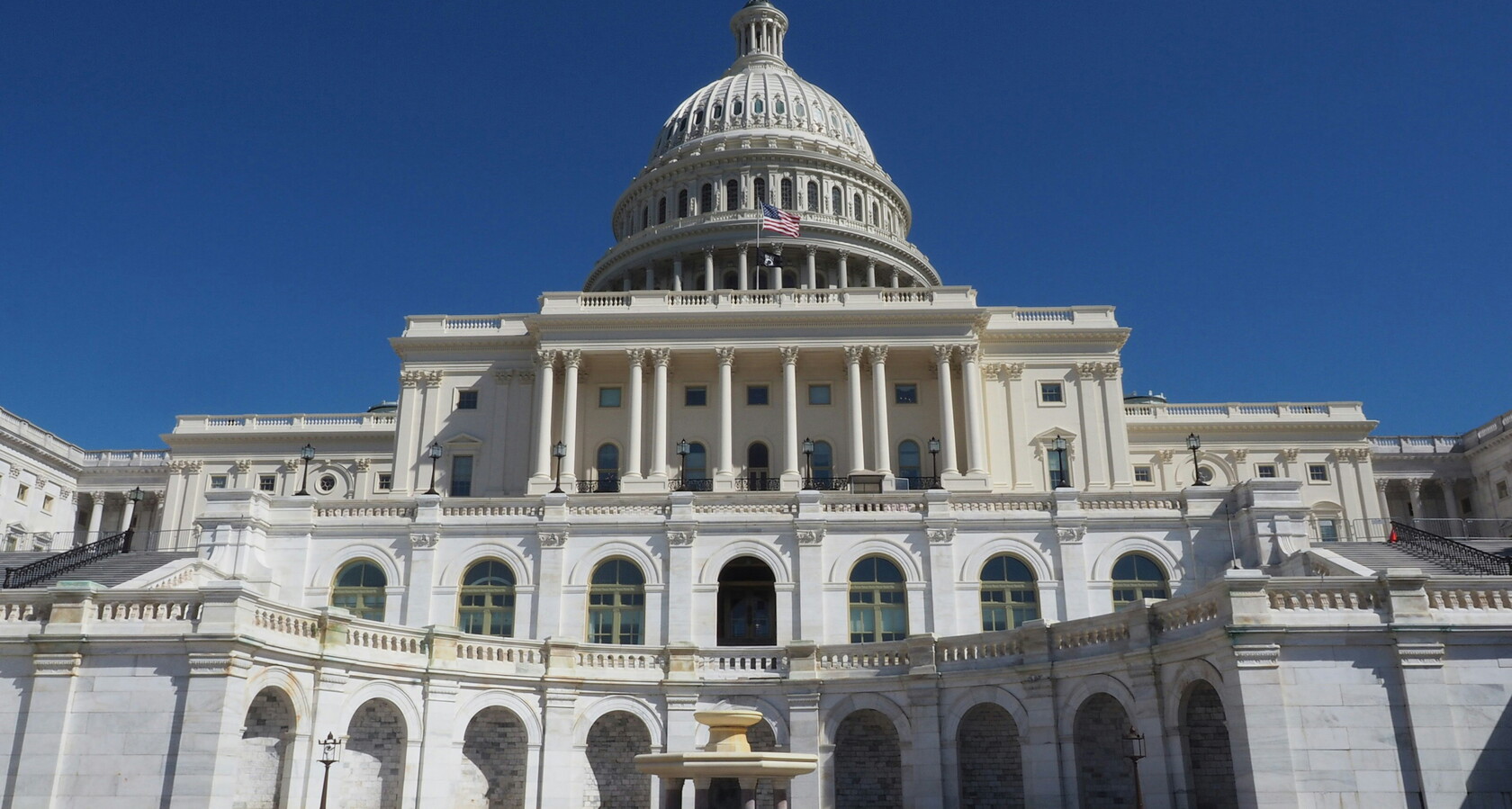
Microchips between security, market, and politics
USA race to the future
The United States is investing enormous resources—both public and private— in artificial intelligence, seeing it as a key area in the battle with China for supremacy. Meanwhile, there is much debate in the country on the ethics of AI
10 min
T
hree young Stanford engineers, traces of Ancient Rome, a tech company, the nuclear challenge, and a small island off Pennsylvania—these are the ingredients of one of the greatest global economic revolutions, at the center of the technological battle between the U.S. and China. This is the convergence of artificial intelligence and high-performance computing (HPC)—two transformative technologies—synthesized in a microchip with the capacity to manage multiple computers simultaneously. Only in the United States could such disparate elements come together, driving unprecedented innovations in research, data analysis, and industrial solutions. Together, AI and HPC are not only improving existing energy solutions but also opening new avenues for the energy transition. Companies can streamline operations, reduce costs, and enhance efficiency. In manufacturing, these technologies can predict machine failures, optimize supply chains, and improve product quality. In finance, they process vast amounts of data, predict market trends, and manage risks. In the medical sector, the use of algorithms in diagnostics is now standard practice in hospitals across the U.S., from New York to New Mexico, and from California to Florida.
Federal investment in U.S. microchip manufacturing has reached a turning point—spending rose from USD 1.3 billion in 2017 to USD 3.1 billion in the 2024 financial year—sending a clear message to China: it will not be allowed to overtake the American lead. This new technology is already a part of our lives. As Rajeeb Hazra, former Vice President of Intel, puts it, “there’s a whole class of new users who don’t know they’re using HPC, but it’s already part of their lives.” Fully harnessing this artificial brain is the modern challenge, though it has deep roots.
Three guys and a vision
Nearly thirty years ago, three Stanford electrical engineering graduates—Jen-Hsun Huang, Chris Malachowsky, and Curtis Priem—founded a company that would revolutionize the world of microchips. They set up headquarters in Santa Clara, California, and named their venture Nvidia by combining “N” and “V” (for Next Vision) with “invidia,” the Latin word for envy. From the start, Nvidia embodied the tension between the drive for advancement and the forces resistant to change. It took two years to produce their first chip, but that microprocessor—capable of handling both 2D and 3D graphics and processing audio—was initially used in video games. Over time, Nvidia evolved to dominate the super microprocessor industry, controlling over 80 percent of the market and surpassing three trillion dollars in market capitalization on Wall Street. Today, Nvidia is a strategic player in the U.S. race for leadership in artificial intelligence and high-performance computing.
Joining Nvidia in this quest is Microsoft, which is also focused on AI and nuclear energy. The Seattle tech giant recently signed a 20-year agreement with Constellation Energy to restart the Unit 1 reactor, which had been closed five years ago for economic reasons. Located on Three Mile Island in Pennsylvania—infamous for the 1979 accident that crippled Unit 2—the plant will provide Microsoft with energy to fuel its push to develop artificial intelligence.
Government plans
Meanwhile, the U.S. government, with approval from Congress, has introduced two key initiatives: the Chips and Science Act and the National AI Initiative Act. The Chips and Science Act, signed into law on August 9, 2022, allocates around USD 280 billion to various technology sectors, including USD 52 billion in subsidies and tax credits for chip manufacturing companies. An additional USD 200 billion is earmarked for research in AI, quantum computing, and robotics. What has this achieved so far? To date, over USD 395 billion in investments have been announced in the semiconductor sector, along with the creation of more than 115,000 jobs.
The National AI Initiative Act aims to coordinate a federal-level program to accelerate AI research and application, supporting both economic prosperity and national security. Key agencies involved include the National Institute of Standards and Technology, the National Science Foundation, and the Department of Energy, alongside contributions from Big Tech companies. Google has made significant investments in AI through Google AI and DeepMind, developing advanced technologies like machine learning and natural language processing. Microsoft, with its Azure AI platform, provides tools and platforms for developers and enterprises, and has invested in OpenAI to accelerate innovation in generative AI. OpenAI itself—renowned for models like GPT-4—is at the forefront of AI research and collaborates with Microsoft to integrate its technologies into commercial products. Startups also play a vital role in the AI ecosystem, with their agility and ability to quickly adapt to new trends. This synergy is creating an unprecedentedly fertile ground for AI innovation.

Privacy and bias, the debate in the Us
While AI and HPC offer tremendous development opportunities across diverse fields, they also raise significant ethical concerns. In the U.S., there is an ongoing debate around issues like algorithmic bias, privacy, and the impact on employment. One of the key concerns is the risk that algorithms may reproduce or amplify existing biases—particularly against ethnic minorities, socio-economically disadvantaged groups, or other vulnerable populations. Many AI algorithms are trained on datasets that reflect historical social inequalities, which can result in outcomes that perpetuate those inequalities. A recent case in American history serves as a warning: a company’s hiring algorithm favored male candidates because it was trained on historical hiring data in which men were the overwhelming majority.
Privacy is another pressing issue. AI requires vast amounts of data to function effectively, but this raises concerns about how personal data is collected, used, and protected. Data from social networks, for instance, can be used to create detailed profiles of users, influencing their decisions and behaviors—often without their explicit consent.
The potential impact on employment is also significant. AI-driven automation could replace human jobs, leading to increased unemployment, especially in sectors like manufacturing, logistics, and even professional services.
As technological progress advances, it is crucial to develop regulations that protect individual privacy and ensure the ethical use of data. The United States takes a more flexible approach compared to the European Union, aiming to foster innovation without imposing overly strict constraints. The National AI Initiative Act seeks to establish standards and requirements for the safe and ethical use of AI, while the government collaborates with tech companies to develop guidelines that balance innovation and oversight. In contrast, the European Union has introduced the AI Act, a comprehensive regulation designed to protect citizens’ rights and ensure transparency and accountability in the use of AI. While the U.S. emphasizes a less regulated approach focused on promoting competitiveness and innovation, it remains vigilant about potential risks.

Competition with China
Added to this landscape are the geopolitical implications. The competition for technological supremacy between the U.S. and China is a key factor. Both nations are investing heavily in AI and HPC to gain a strategic advantage. With leading tech companies like Google, Microsoft, and OpenAI—now valued at a potential USD 50 billion—the U.S. is spearheading private-sector innovation and is open to collaborating with other countries, including Italy. Meanwhile, China has taken a more centralized approach, with state-led investments and a national strategy to become the world leader in AI by 2030.
It is a battle on a new frontier, with boundaries yet to be defined. Artificial intelligence, with its promise to replicate and surpass the human mind, stands as a modern Prometheus—bringing the fire of knowledge but also the risk of eternal consequences. In this context, the United States acts as the titan seeking to harness this primordial force, fully aware that mastery over these technologies could shape the future of the nation and the world. But what does this mean for the essence of humanity? In a world where machines think and decide, where does the human soul fit in? The challenge is not just technological, but also ethical and philosophical. Freedom, privacy, and even the very concept of identity are being questioned by algorithms that know neither morality nor compassion—issues increasingly discussed in the American scientific community. Yet, driven by an insatiable thirst for progress, the U.S. presses forward. It stands at a crossroads, ready to face the unknown with courage and determination, hoping that its moral compass will guide it through the storms of progress

